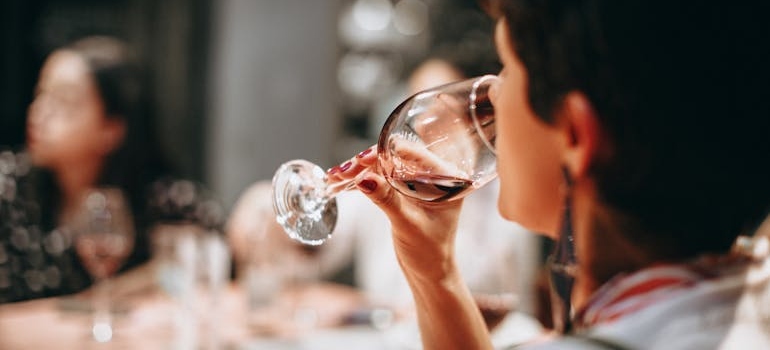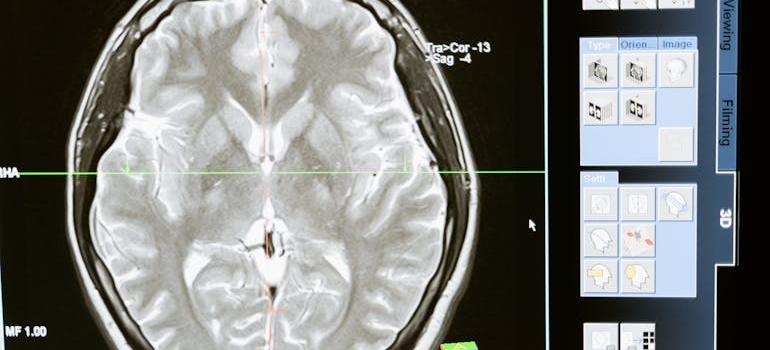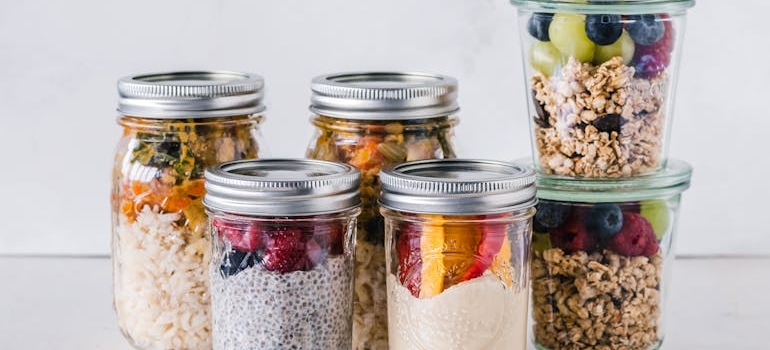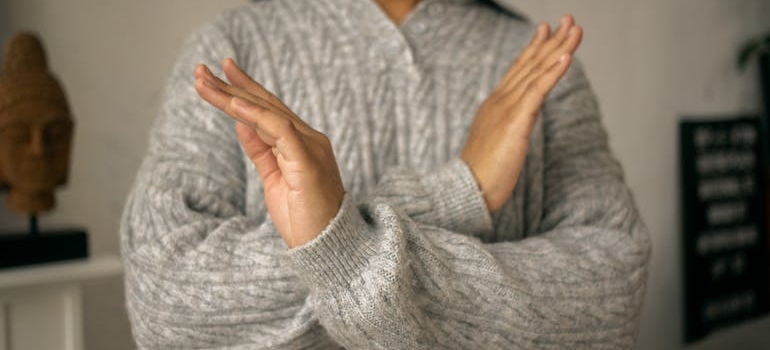Ways to Stop Alcohol Cravings
It can be easy to forget that alcohol is a drug. That is, until you start to develop alcohol cravings. When you start drinking often or quite heavily, you may find that, over time, you begin to crave alcohol. You may be sitting at work and unable to think about anything except for when you can have your next drink. These cravings can seem uncontrollable. And if you find yourself acting on these urges to drink—despite the negative consequences—this may be a sign of alcoholism. In this article, we will take a look at why alcohol cravings start and how to manage them now and in the long term.
Jump to Section
The Science of Alcohol Cravings and Addiction
Alcohol is a drug. When a drug of any kind enters the body, it disrupts the body’s natural state. We know alcohol can affect a person’s emotions, decision-making skills, and motor skills, but what happens to the brain when someone drinks again and again?
Alcohol, though classified as a depressant, acts as both a depressant and a stimulant (which is why it brings you both highs and lows). When alcohol is consumed, it directly impacts the body’s neurological pathways, including the glutamate system, which is directly connected to plasticity, learning, and memory. You might be thinking, yes, that explains blackouts, but it’s more complicated than that.

Causes of Alcohol Cravings Withdrawal
It’s a tough reality, but 50% to 90% of people recovering from alcohol use might relapse at least once during the four-year recovery period following their treatment at a rehab center in Pennsylvania. The relapse rate for alcohol is similar to that for nicotine and heroin addiction. Some researchers believe the high rate of relapse for alcohol and drug addicts is due to impaired control caused by chemical changes that have taken place in the brains of alcoholics and addicts, changing the brain’s reward system.
If you’re navigating this challenge, sober living houses in PA can offer support. They provide a stable environment where you can strengthen your recovery alongside others who understand what you’re going through. Stick with us; understanding and managing these cravings is a big step towards lasting recovery.
Changes in Brain Chemistry
Over time, alcohol use begins to affect the neurotransmitters, or chemical messengers, in your brain. These changes can lead to tolerance, or a need to drink more in order to feel the same effects. They can also leave you more sensitive to alcohol’s effects and raise your risk of withdrawal symptoms. When not drinking, you might begin to notice feelings of anxiety or other emotional distress, along with strong cravings for alcohol. These symptoms are due to the disrupted balance in neurotransmitters like dopamine and GABA, which regulate mood and stress responses. Given these profound changes, therapies such as DBT for alcohol use disorder are essential. Dialectical Behavior Therapy helps individuals manage the psychological impacts of altered brain chemistry and supports recovery by teaching coping skills for emotional and behavioral challenges linked to addiction.

Habit Formation
Alcohol can affect your brain in other ways, too.
People often begin to use alcohol regularly because drinking leads to positive feelings or helps improve their mood:
- A drink after an unpleasant fight with your partner might help you feel calmer.
- A drink after a challenging day at work might help you relax.
- A drink at a party might help you talk to people more easily.
The pleasant euphoria you experience when drinking becomes a reward, one that reinforces your desire to drink in certain situations. You might eventually start craving that reward in new situations.
Remember, this cycle can be broken. If you’re trying to cut back and find it challenging, know that help is available. Outpatient detox rehab in PA offers support that fits into your daily life, helping you understand these habits and how to manage them without disrupting your routine. Getting help is a strong step towards taking back control.
Ways to Stop Alcohol Cravings
When you are attempting to make changes to your drinking habits or drug use, it can be frustrating trying to figure out how to control urges. You might be doing your best to avoid taking drugs or drinking, but you still find yourself having drug and alcohol urges or cravings. Unfortunately, cravings don’t always go away fully. They can return years, even decades later. One of the best things you can do is recognize them and respond to them in a healthy, positive way. Throughout the recovery process, thoughts, feelings, and physical sensations will come and go — and thankfully, what triggers you today might not trigger you next year. But if you want to overcome the triggers and avoid, minimize, and overcome the cravings, it is necessary to recognize what exactly is triggering you.
There are a number of ways to manage and reduce urges or cravings. There is no single best method or silver bullet. And some are more helpful early on in your efforts to change your drinking, whether it be to cut back or to stop drinking entirely. Others we consider somewhat more advanced strategies.
Know Your Triggers
During your daily activities, keep a journal with you and take notes of when you notice any cravings, regardless of whether they are mild or strong. Try to figure out what it was (e.g. a place, a person, a situation and so on) that initiated this craving for alcohol. This will help you to anticipate cravings and plan how to deal with the triggers. For instance, if you know you’re going to be around people who are drinking, know what non-alcoholic drink you’ll order ahead of time, have an exit strategy and keep in mind anyone you can call for support.
These preparations are key steps in understanding and addressing alcohol cravings and learning how to beat them effectively. By recognizing your triggers, you’re empowering yourself to take control over the cravings instead of letting them control you.

Question the urge
Whenever you feel an urge to drink, see it as just a signal, not an order. It might suggest you have a drink, but remember, you are in charge. Recognize the urge, acknowledge its presence, and then use it as a cue to engage in one of your coping strategies. Over time, this practice will train your brain to handle these urges more effectively, making them less daunting.
Each time you successfully manage an urge, you reinforce your ability to resist alcohol, which is a crucial skill in overcoming alcohol cravings. Treat these moments as opportunities to strengthen your resolve and remind yourself that each victory, no matter how small, is a step toward long-term recovery.
Avoid Tempting Situations
Avoiding situations where you might be tempted to drink is a practical approach to managing cravings. At home, try to keep little or no alcohol around. When socializing, choose environments where alcohol isn’t the focus. If it feels difficult to decline social invitations involving alcohol, remind yourself that you are opting out temporarily for your well-being.
As your confidence in handling cravings grows, you might feel more comfortable in those situations again. Meanwhile, suggest alternative social activities to friends that don’t involve drinking. This proactive stance isn’t just about dodging alcohol; it’s about building a lifestyle that naturally supports your recovery goals and helps you maintain focus on beating alcohol cravings.
Distract Yourself
Sometimes you can’t avoid triggers which may be feelings you have or a physical condition that comes on from time to time. Once you experience the urge, distract yourself with something that takes your attention. Then check back in with yourself in, say 30—45 minutes and see if the urges intensity has changed. And if the first distraction isn’t helpful, try another. Or use another strategy altogether.

Think About the Consequences
One effective way to stop cravings is to remind yourself what the consequences will be if you indulge those cravings. The negative effects of alcohol abuse for you could be a worsened mental health condition, such as depression or anxiety, or a relapse into alcohol addiction. Alcoholism can be devastating—both for you and those you care about—so it isn’t worth giving in to a craving, even if you tell yourself “Just this one time.”
Alcohol problems can throw not just your life but also the lives of those around you into chaos. If you’re finding it tough to manage on your own, consider enrolling inpatient alcohol rehab in Pennsylvania. They’re equipped to support you through this, step by step. Hang in there and keep reminding yourself of what’s at stake—it’s worth it for your well-being and for a brighter future.
Focus on Healthy Foods
During and after your alcohol rehab program, mood and physical changes are common. These often occur together, sparking alcohol cravings, particularly in early recovery. However, incorporating foods that help with alcohol cravings can significantly reduce these urges. A diet rich in essential vitamins, minerals, and nutrients addresses deficiencies caused by long-term alcohol use.
To maintain your health and well-being adopt new eating habits that support your metabolic and nervous system health. By choosing nutritious foods and establishing a healthier lifestyle, you can better manage cravings and foster lasting recovery. This approach is vital for resetting your body and ensuring a successful transition to sobriety.

The DISARM Method – Alcohol Cravings
Another strategy is to “DISARM” your urges. It’s both popular and widely used in SMART Recovery. It was originally developed by Joseph Gerstein MD, an early co-founder of SMART Recovery. Here are the steps.
1. Name the Urge
Destructive self-talk is not you, it’s your enemy. Name the urge as if it were another being. Pick a name for your urges that’s imaginative, strong, and meaningful to you. That little voice in your head that badgers and coaxes you. Label it. Some call it “The Inner Brat,” “The Alcohol Salesman,” “The Lobbyist,” “The Terrorist,” “The Whiner” or just “The Enemy.” Pick a name that fits your experience with it. By externalizing it, you turn it into something you can confront and control. This act of naming creates a psychological distance, allowing you to see that these urges are not integral parts of your identity but rather external challenges to overcome.
2. Awareness
Develop the early warning habit. Learn to recognize the urge when it first comes calling. Discover your earliest red flag signals. Don’t be caught off guard. Nipping temptation in the bud is easier than stopping it when it’s got a full head of steam. Understanding the patterns and circumstances that lead to cravings can empower you to prepare responses or change your environment proactively. This awareness acts as your first line of defense, enabling you to manage situations effectively before they escalate into cravings or relapses. Stay alert and always be prepared to counter the initial signs of temptation with your learned strategies.
3. Refusal
Immediately, firmly refuse. Don’t even consider the possibility as a choice. You have already made your decision not to drink. You’ve made it your top priority. On general principle, you don’t have to reason it out yet again. Whenever you get the idea to resume drinking, you can tell that idea to go to hell. You don’t need to debate. This immediate and resolute response is your shield against the persuasive tactics of addiction. The power of a straightforward ‘no’ cannot be overstated—it asserts your autonomy and reinforces your commitment to sobriety. Every time you refuse, you strengthen your resolve and build confidence in your ability to maintain control.

Managing Alcohol Cravings with Little Creek Recovery
Alcohol cravings are common, especially when you first try to change your drinking habits. It could take some time and effort to find a strategy that helps you navigate alcohol cravings and how to beat them effectively, but you do have plenty of options for support. Therapy, medication, and recovery programs can all have benefits for reducing and preventing these cravings. At the end of the day, just remember you don’t have to run the course alone — connecting with a therapist or joining an alcohol rehab program in Pennsylvania can make all the difference. You don’t need to manage the situation alone. Substance use disorders of all varieties are common and treatable, and there is no shame in needing help with addiction. We’re here for you.